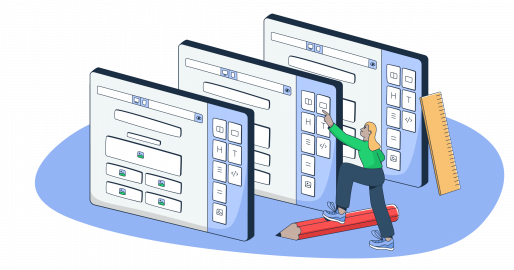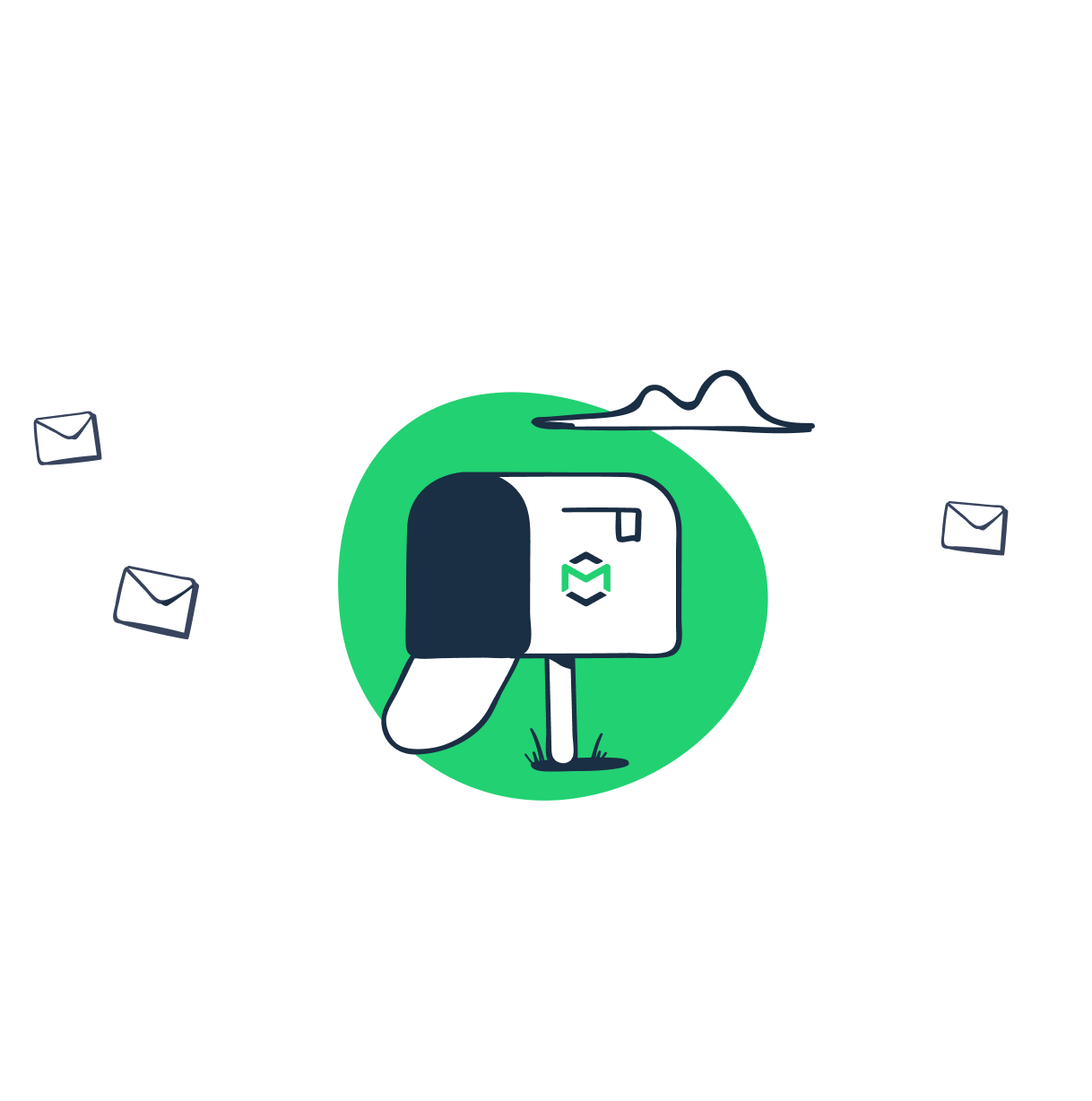Having a warm leads list means you’re halfway to success. They’re interested—now it’s time to convert. But without the right email strategy, warm outreach can lose momentum, and leads might not move forward.
Please note, this guide is focused specifically on email marketing for warm leads—those who have given you their email addresses and explicit consent to receive marketing emails from you.
Now that we’ve set it clear, let’s explore what warm leads are, share best practices for warm lead email templates, and review examples to help sharpen your approach.
What are warm leads?
Warm leads are people who have shown interest in your product or service but have yet to take the final step and convert.
Unlike cold leads, these prospects may have downloaded something from your website, attended your webinar, or subscribed to your blog posts. At this stage, they are already familiar with your brand, which makes them more likely to engage.
For software products, warm leads are users who are using a free trial or free version of the
product before converting to paying customers.
What are warm lead templates?
Warm lead email templates are pre-written messages that are strategically crafted to engage prospects who have shown interest in your product or service.
At this stage, businesses usually have basic customer data that allows them to personalize emails based on interests and behaviors. Since warm leads are already somewhat familiar with your brand, these tailored templates—designed to address their pain points—serve as a quick and effective way to drive conversions.
By using templates, businesses can save time while making sure their messages are relevant and impactful.
It’s important to note that sending marketing emails without proper consent is illegal in many regions. Privacy regulations like GDPR (EU), CAN-SPAM (US), PECR (UK), and others require businesses to collect emails ethically—through opt-ins, subscriptions, or direct engagement. Respecting these laws not only keeps your outreach compliant but also builds trust with your audience from the start.
Benefits of warm email outreach
Warm lead emails do more than just open communication lines—they help businesses convert interested prospects into paying customers. Here are some key benefits:
Higher conversion rates
Customers’ interest in the brand and its services eases the tasks of the sales team and marketing specialists. It’s not just that they know the product—you’ve also got some solid data to work with.
Take SaaS email marketing, for example. When someone signs up for a newsletter, they usually share things like their country, job title, industry, or company size. That kind of info makes it way easier to personalize emails, offer real value, and build a stronger connection. And, of course, that leads to better conversion and response rates.
Cost-effectiveness
Attracting new leads through digital ads on social media or search engines can get expensive, especially for small businesses or startups. But with a warm email list, you’re reaching out to people who are already interested. This means you can scale back on costly advertising efforts—which were expected to hit $298.4 billion in 2024 and redirect saved resources to other areas, like product development or customer support.
Fewer deliverability risks
Unlike cold email campaigns that are sent in bulk and require warming up, warm outreach takes a different approach — targeted and personalized emails. These messages usually correspond to the marketing funnel stage that this person is at.
This level of personalization not only improves engagement but also lowers the chances of emails being marked as spam. Since warm emails are more relevant, they’re less likely to trigger spam filters, helping maintain strong domain and email deliverability.
Steps to create warm leads email templates
With the benefits of templates covered, steps on how to write a warm email are next in line. These six steps will get you closer to mastering email prospecting and creating catchy sales emails.
Write a strong subject line
The section speaks for itself—a compelling subject line is key to making a decent first impression on decision-makers and ensuring it is not the last. According to recent studies, 33% of recipients open their emails based on the subject line, so it should always address the prospect’s pain points.
Are there any tips to consider? Yes.
- Precision. A good subject line of the warm sales email template is short. Try to keep it under 50 characters.
- Personalization.Apart from the recipient’s name, use the pain point that might trigger their interest or highlight a recent interaction they had with your brand to make the email feel more relevant and engaging.
- Spam triggers. Some words might sound spammy and increase the chances of your email landing in the junk folder. There’s a list of such trigger words that can harm deliverability, and we cover them in detail in a separate blog post.
Add personalized email opener
Email openers are a way to catch attention from the very email intro, and we are not talking about standard greetings.
Think of using customer behavior and previous interactions with your brand to level up your email content.
Provide value
Opening an email with too many sales pitches pushes away, doesn’t it? So, how can you master warm email prospecting?
The key is finding the right balance between presenting your offer and genuinely being helpful. One of the best ways to do this is by including educational or informative content in your outreach. Here’s how it adds value to your emails:
- Offer immediate usefulness. Share actionable tips, insights, or resources that the prospect can apply right away—even if they don’t convert immediately. This positions your brand as helpful, not just sales-driven.
- Show expertise. Whether you run a large or small business, sharing case studies, user stories, whitepapers, or eBooks demonstrates how your solution addresses the prospect’s pain points.
- Build trust with social proof. Including customer reviews, testimonials, or success stories paints a picture of a trustworthy brand. The quantity and quality of this feedback both matter. In fact, 85% of consumers trusted online reviews as much as personal recommendations in 2023.
Optimize call-to-actions
A well-crafted email can spark interest, but it’s the call-to-action (CTA) that drives results. Whether you’re aiming for a click, a reply, or a download, your CTA needs to be clear, compelling, and easy to engage with.
Even small tweaks in wording, design, or placement can significantly impact your response rates. Here are some practical tips to make your CTAs more effective:
- Try to fit the button text in up to 3–5 words. While a detailed description might seem helpful, long text may not display properly and could look odd in some email clients.
- Use action verbs. A CTA should clearly guide the reader on what to do next. Phrases like “Download Now,” “Get Started,” or “Book a Demo” create a sense of direction and encourage immediate response.
- Consider color psychology. People can associate different colors with various things—red is often related to power or passion, blue reminds them of peace, and green fosters trust and safety. You can A/B test the same button in different colors to find the best fit for your audience.
- Adjust the button size to mobiles. Small screens make it hard to tap on a small element. Make the buttons large enough to tap easily, and consider extending them to the full width of the email for better accessibility.
Optimize the timing
How would you react to an email sent at midnight or Sunday morning? You probably would be disappointed or angry, and this leads us to the next stop: the timing of your emails..
Here are a few things to consider when setting up your email campaign:
- Prospect’s time zone. Hitting send at 2 p.m. your time might seem perfect, but there’s no guarantee your prospect’s even in the same time zone. Instead of guessing, try using email marketing automation tools that adjust the send time to match where your prospect is.
- Pick a day. Tuesdays, Wednesdays, and Thursdays tend to have the highest open rates for warm emails. If you’re still sending emails on Monday or Friday mornings, it might be time to rethink your approach—these days are often too busy or too close to the weekend to get the attention you’re looking for.
- Choose the best times to send. Just like certain days work better, some hours are more effective for sending emails. Schedule your emails between 8 a.m. and 10 a.m., or in the early afternoon, around 1 p.m. to 3 p.m., when people are more likely to check their inboxes.
But don’t just rely on general guidelines—run A/B tests to find what works best for your audience. Experiment with different days, times, and time zones, and adjust your strategy based on the results
Prepare follow-up emails
~Ideally, warm leads reply to your initial email; however, reality often tells a different story. According to recent studies, the first follow-up message can boost response rates by 49%.
It’s a good idea to plan a series of follow-ups as part of your marketing strategy. To save time and effort, you can automate these emails and even create scenarios that adjust the next message based on the subscriber’s actions.
Examples of warm lead templates
The good news is you don’t need to write a new email for every lead. You can use pre-designed templates to streamline your warm emailing and keep it effective. Plus, AI tools can help you create customized templates, refine your messaging, and personalize content based on your audience’s behavior. Check out this video to find out what AI tools are the best for email marketing.
Email template for trial users
This type of email is a great way to remind trial users about the benefits of your product or service. A good practice for such emails is to include testimonials or reviews from existing customers to nudge users toward upgrading.
Subject Line: How’s your trial going, {Customer name}?
Hello {Customer name},
We noticed you’ve been exploring {a feature a customer has checked out} during your trial—it’s actually one of our customers’ favorites!
[Reviews or testimonials]
If you’re curious about how our advanced features can help you even more, I’d be happy to give you a quick walkthrough whenever it’s convenient for you.
[CTA: Book a call now]
Looking forward to hearing from you!
Cheers,
{Company name team}
Email template for content subscribers
If a lead downloaded or requested your educational content like eBooks, guides, or PDFs, you can send them a follow-up email to keep the momentum going. This is a great opportunity to share additional resources, offer personalized insights, or suggest next steps based on their interests.
Subject Line: Your Free Email Marketing Guide is Inside
Hi {Customer name},
Great to have you with {Your company name}! As promised, your Email Marketing Guide is ready and waiting for you.
[CTA: Download Your Guide]
We also noticed your interest in {specific topic a customer has checked out} and thought you’d enjoy these additional resources:
[Blog Article #1]
[Blog Article #2]
Our team hand-picked these just for you to help tackle {Customer’s pain point} and make your journey even smoother.
[CTA: Explore More Resources]
Looking forward to hearing what you think!
Best,
{Company name team}
A follow-up template
Following up with a potential customer increases the chances of getting a reply and securing a conversion. If a prospect has gone quiet, it doesn’t necessarily mean the opportunity is lost.
A well-planned follow-up strategy shows your dedication to their experience and keeps your company top of mind.
Hi {Customer name},
It’s been a while since we last connected, and I’d love to pick up where we left off. Have you had a chance to explore our latest offerings, like {new feature/product}?
I’d really appreciate any thoughts or feedback you can share. Plus, here’s a little something to welcome you back:
[CTA: Claim Your Exclusive Discount or Resource]
If you’re ready to dive back in, feel free to check out what’s new:
[CTA: Explore Now]
Looking forward to hearing from you!
Best,
{Your Name/Company Name Team}
Wrapping up
Warm lead email marketing is a solid way to foster relationships with potential customers and encourage upgrades.
By delivering personalized, timely, and valuable content, you build trust and keep your brand top of mind. And with ready-made email templates, you can streamline your outreach and convert prospects into paying customers more efficiently.



